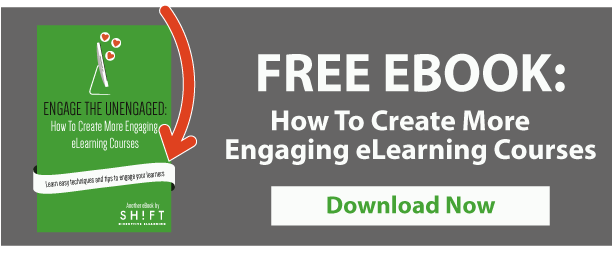 This blog post is a must-read for all eLearning professionals hoping to become better ones this year. We need to STOP doing things in order to improve results or make time for new strategies. Let's make today the day where we stop spending time on the aspects of eLearning that don't work and instead use the time we save to create new and better tactics.
This blog post is a must-read for all eLearning professionals hoping to become better ones this year. We need to STOP doing things in order to improve results or make time for new strategies. Let's make today the day where we stop spending time on the aspects of eLearning that don't work and instead use the time we save to create new and better tactics.
Here’s what to stay away from and why — complete with recommended alternatives:
Create, publish and forget
Very frequently we can see eLearning professionals that just create a course, publish it and forget all about it. Certainly, one benefit of eLearning is the ability to modify content without having to redistribute materials or retrain instructors. Therefore, take advantage of the tools available, and correct mistakes you may fin along the way. Keep your eLearning courses fresh and updated.
What to Do Instead:
Focus on getting feedback. Look for technical issues, or other types of problems; sometimes students detect these types of problems and they will let you know.
Evaluate. Evaluation definitely helps you improve your eLearning so that it’s even a greater success next time round. Student performance, course design and content quality are just some of the aspects that should be evaluated for better performance.
Creating Complex and Lengthy Courses
We’ve all been in an eLearning course or training session that seemed to go on forever, right? This practice ruins user experience and could make learners hate your courses and never wanto come back. Besides, it’s completely boring.
What to Do Instead:
Keep your eLearning courses resourceful! Make courses that are full of relevant content so that learners can remember only the important features.
Remove unnecessary content from the course. Break complex and lengthy material down into digestible and manageable modules. Keep in mind the factors that hold your lerner's attention, for example short videos (maximum 5 minutes each), animations and visual representations.
Developing Emotionless Courses
Many eLearning courses tend to be dry, text-heavy, and emotionless. If you really have absolutely no idea how to insert some excitement, you should think of how a customer experience works. You want to design experiences, not just learning. You’ll see how including some spice and emotion into your eLearning is going to take it to the next level, where it really works.
What to Do Instead:
Help learners emotionally understand why this experience is important to them, and maintain that interest through the entire course. If people care, they learn better. Go beyond just the cognitive level, and address the emotional level.
Including Unrealistic Business Scenarios
Stop creating scenarios that don’t place the student in their real context. If it’s something your learners don’t feel realted with, and if they can't take what they’ve learned and actually transfer it to their job, then your eLearning course will completely fail its goal.
What to Do Instead:
Be realistic. Focus on your audience’s reality. Get to know your learners, identify their frustrations and challenges. If your content is realistic, relevant, and directed at them, they will feel identified with the scenario, thus retaining the information.
Writing easy and downright stupid quiz questions
Quiz questions where there’s one good answer and all of the rest are obviously not right need to be avoided. They hold no real value, are pointless and don’t really measure anything.
What to Do Instead:
You need to focus on creating better questions (not too easy, not too difficult). Remember that adult learners like to feel respected and valued. Presenting them questions that are stupid and too easy, will make them leave and never come back.
What would you add to this list, or rather, delete from your own eLearning strategy?









